How is the passive cooling system in computers MIC-7900
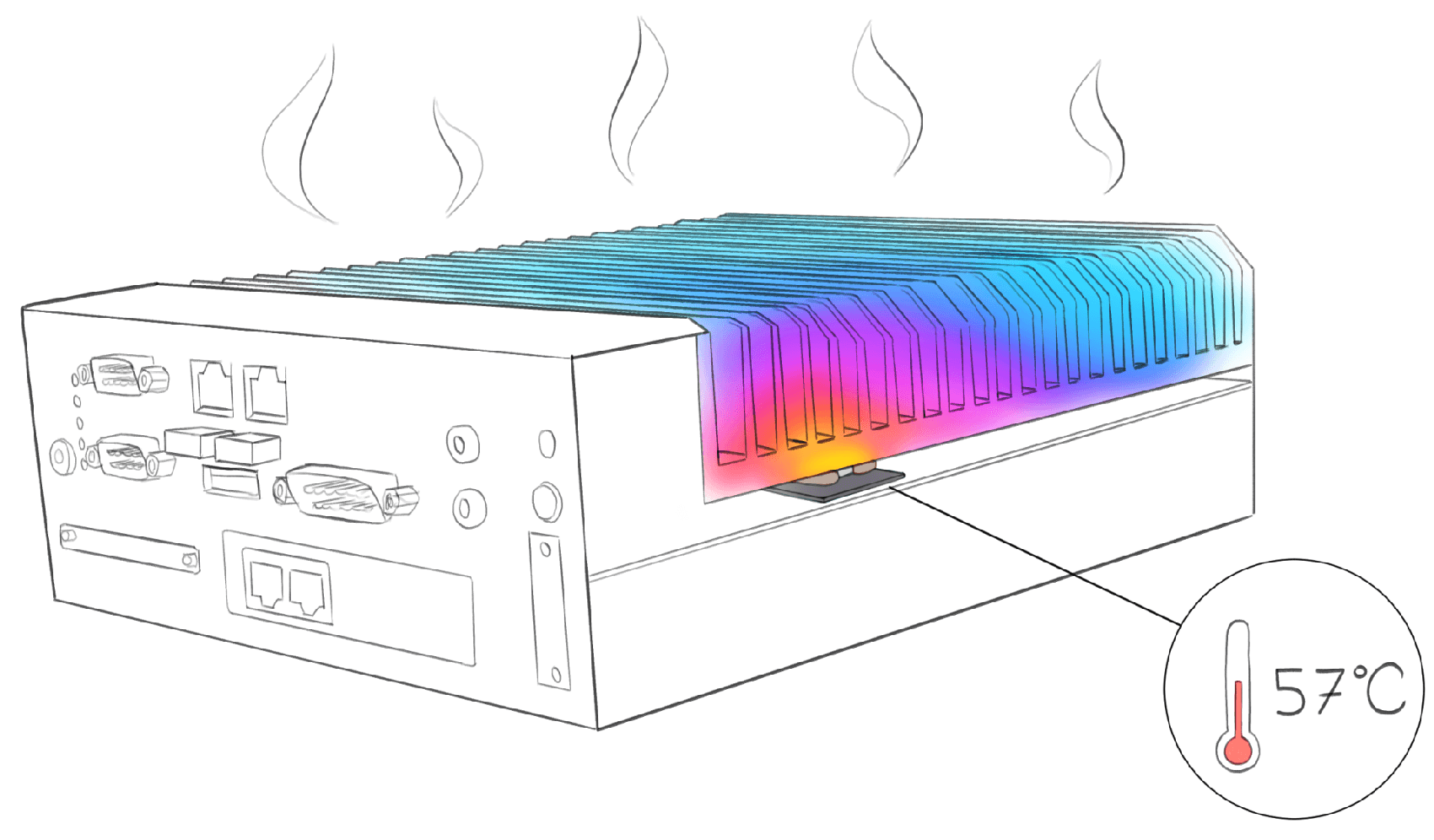
After our article on fanless computers MIC-7000 , there were many questions about the cooling system ^ is it really completely passive or are there any active cooling mechanisms inside? Some commentators doubted that the system could work on passive cooling without throttling , that is, reducing the processor frequency upon reaching threshold temperatures.
To dispel myths, we decided to test the passive cooling system and conduct stress tests for clarity.
We will carry out tests on the MIC-7900-S5A1E computer . This is not the most productive model in the line, but its power is enough for many tasks of the so-called. edge computing - placing the computing node as close to the final equipment as possible, which is widely used for machine vision systems, automation, machine tools.
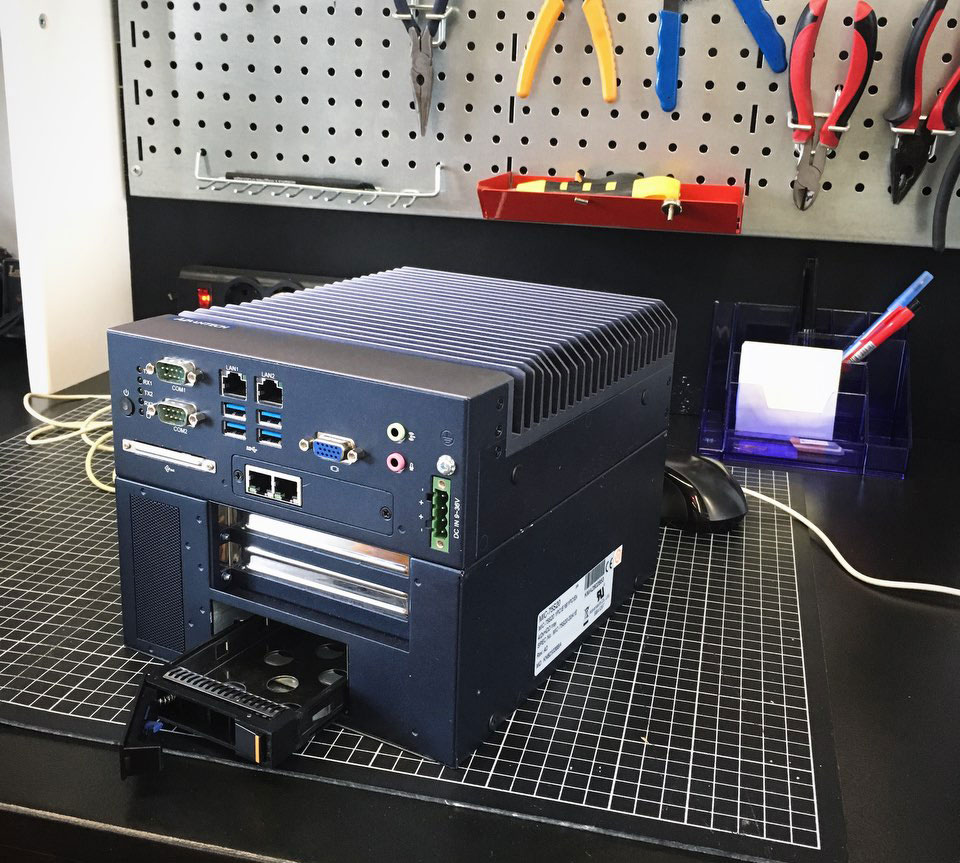
MIC-7900 computer with MIC-75S20 expansion module installed on 2 PCIe boards and 2 hard drives
The tested computer is equipped with a Xeon D-1559 processor with a frequency of 1.50 GHz (2.10 GHz in Turbo Boost mode), 12 cores, 24 threads. The heat dissipation is 45 watts, this is a little compared to the top processors, in which the TDP can be more than 100 watts, but still significant.

Half of the computer is a solid massive radiator. Active cooling systems can be much lighter and more compact, but the main advantage of passive cooling is reliability. Systems with fans require frequent maintenance, become clogged with dust and fail. Passive cooling systems do not suck in dust and require much less attention.

The radiator occupies half of the computer case.
We will study the thermal interface device. Let's take a look at the computer and look at the place where the thermal distributor of the processor is attached to the radiator. To do this, put the camera in the gap between the motherboard and the radiator, which is about 8 mm.

Mounting the heat sink to the heat-distributing cover of the processor. The processor is soldered to the motherboard.
In the tested model, the processor is soldered to the motherboard, which allows to achieve a smaller clearance between the heatsink and the board. The disadvantage of this solution is the inability to replace the processor. There are also MIC-7000 models with a familiar socket that allows you to replace the processor.
Testing
Before booting the system, let's see what temperature sensors are available in the BIOS:
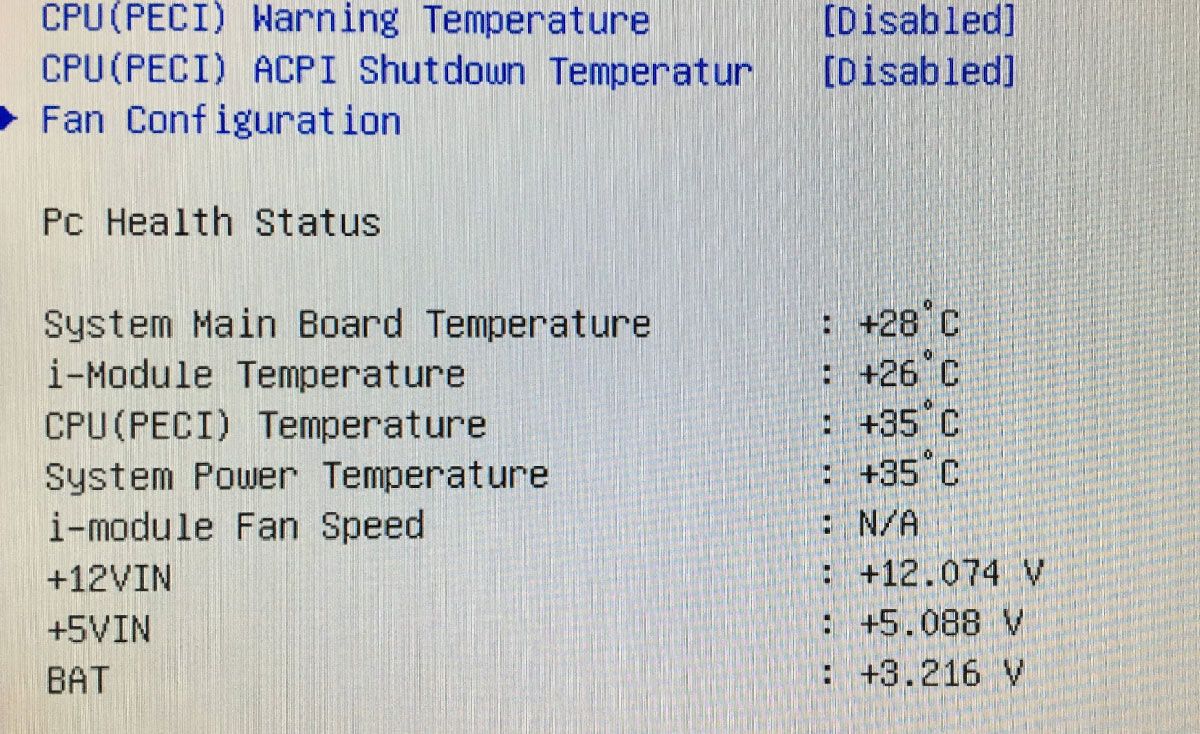
BIOS temperature sensors
We measure the temperature of the radiator in idle without load using an infrared pyrometer. To do this, leave the system for several hours with a loaded operating system, but without running programs.
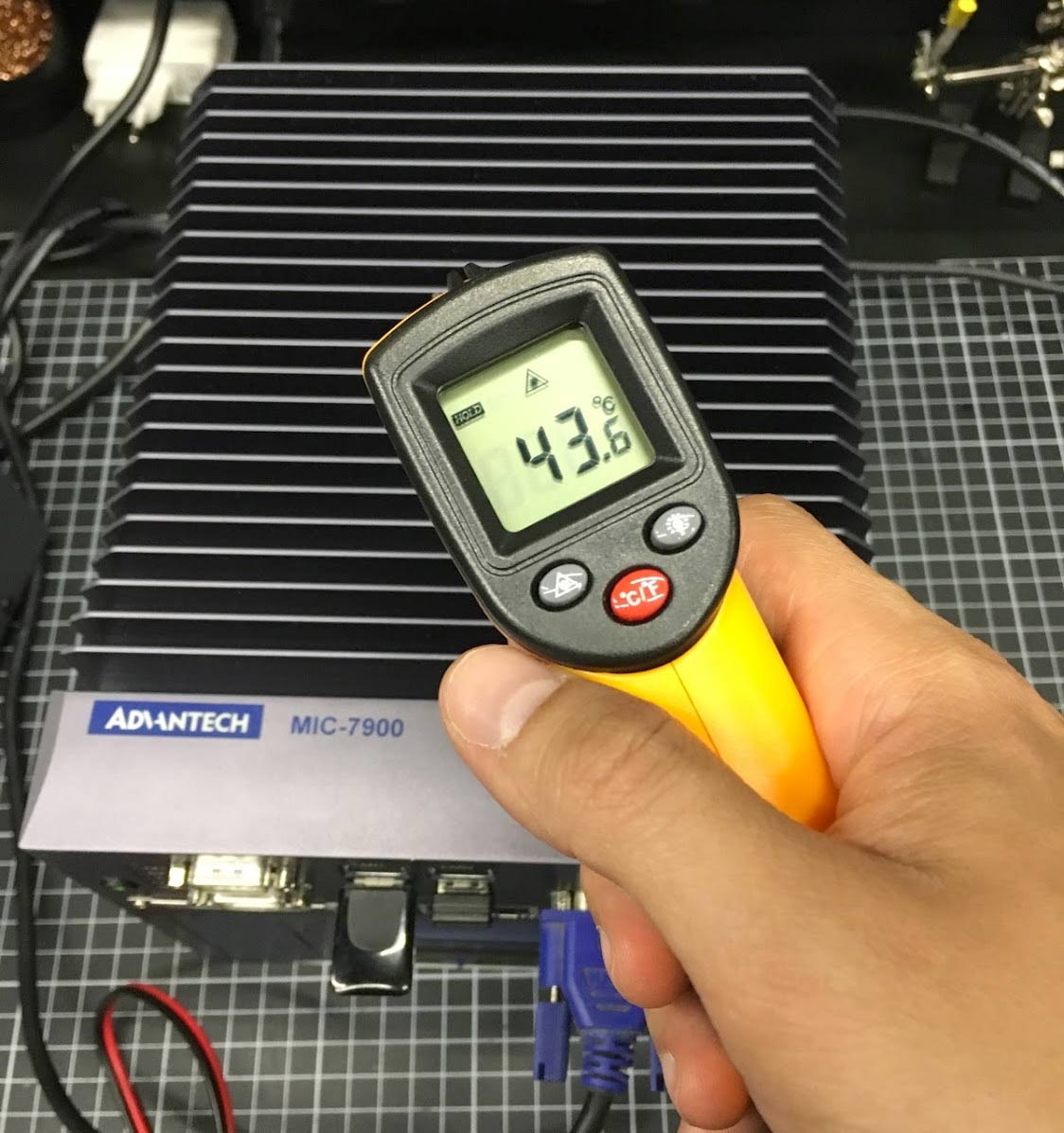
Radiator temperature without load, idle
We will test the system using the AIDA64 program, using the system stability test. This test simultaneously loads the processor and memory, and can also use the graphics processor. For objectivity, we will perform the test for a long time. We left the system all night.
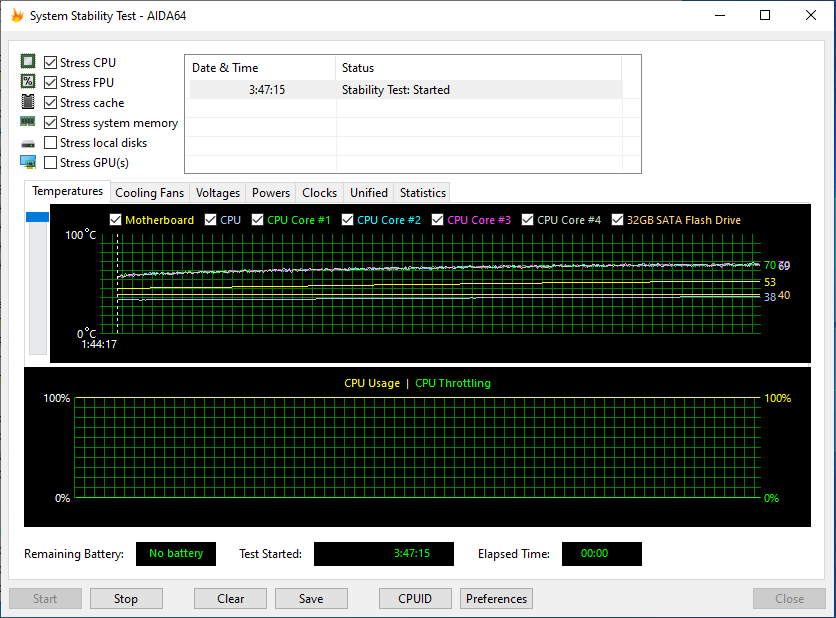
Load testing with AIDA64. It can be seen that for the entire time of the test, throttling does not occur.
The graphs show that the temperature of the processor cores did not rise above 70 ° C, which fits into the acceptable values for this processor model. Throughout the test, the temperature in the room was about 24 ° C. The computer radiator was not blown, a central exhaust hood worked in the room.
The graphs show that the throttling effect, that is, the mechanism for skipping processor clock cycles to reduce the load, does not occur. The system is operating normally.
At the same time, the radiator grill was heated to 58 ° C, on which you could hold your hand without discomfort for a couple of seconds.

Conclusion
Fully passive cooling is possible and works well. The processor frequency does not decrease; the processor operates in the normal mode at maximum load with no time limit. The MIC-7000 systems can be used in facilities requiring increased reliability and uptime, in remote facilities where maintenance is difficult, and also in conditions of increased air pollution, where active cooling systems quickly fail.
Welcome to the Advantech Partner Forum

The Advantech Forum will be a unique platform for discussing local and global trends in the Internet of Things. Here you can exchange experiences using new technological solutions and products, find new customers and partners. You will have a chance to see the products that we described in articles and not only. We will feature industry leaders and representatives of key partners - NVidia, Intel and other companies that are actively involved in the development of the industrial Internet of Things for the coming years. We will be glad to see all the experts in the field of industrial automation and the Internet of things at the event. Participation in the event is free! Limited number of seats. Hurry up to register .
All Articles